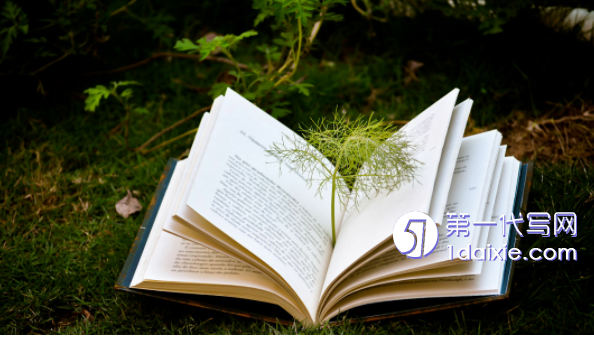本文是一篇英语论文,笔者认为词汇层面,针对多义词和文化负载词的翻译,采取了选词法、注释法,保证用词精确,确保原文意义完整传达,以实现交际目的。
Chapter 1 Task Description
1.1 Selection of Little and Often: A memoir
The selected source text is drawn from Little and Often: A Memoir, a prominent piece within the realm of narrative prose. The rationale behind this selection can be elucidated as follows:
Firstly, the depictions of family, love, and friendship within Little and Often: A Memoir resonate deeply with the translator. The title “Little and Often” suggests a narrative of incremental progress. It speaks to the idea of making small, consistent efforts that accumulate over time. This philosophy can be incredibly motivating for individuals who feel overwhelmed by the scale of challenges. Through the act of building a canoe, Preszler navigates the turbulent waters of grief, family, and personal identity, offering readers a poignant reflection on life, death, and everything in between. The translator is deeply moved by this book and hopes that more people can read it.
Secondly, as a memoir, this work embodies a fusion of literary aesthetics and genuine. Preszler’s writing style is evocative and poetic. He has a knack for turning everyday experiences into profound reflections, making the memoir a joy to read. While it offers comprehensive insights into myriad factual events, it is the author’s subjective opinion that threads through the narrative, bestowing it with a unique personal flair. Therefore, accurately portraying objective facts and honoring the author’s subjective opinion are the two main challenges of memoir translation. The translator aims to improve translation abilities through this approach.

1.2 Analysis of the Source Text
The analysis of the source text is an essential part of the process before translation. The purpose of the analysis is to ensure that the translator has a good grasp of the source text and that the subsequent translation proceeds smoothly. This part mainly consists of an introduction and features of the source text.
1.2.1 Introduction to the source text
Little and Often: A memoir was published on April 27, 2021, and consists of 98,481 words; the translator chooses the first five chapters as the source text.
Little and Often: A Memoir by Trent Preszler is a profound autobiographical journey. When his father passed away, leaving behind nothing but an old woodworking toolbox, Preszler made the decision to craft a wooden boat using the tools therein as a tribute to his father (Preszler, 2021). This process is not just an exploration of woodworking skills, but also a deep emotional journey that makes him revisit the intricate and tense relationship he shares with his father. In the memoir, Preszler poignantly recounts his childhood on a farm in South Dakota, navigating the complexities of growing up with a reserved and sometimes stern father, and the unspoken love between them.
Chapter 2 Theoretical Framework
2.1 Theoretical Overview of Communicative Translation
Newmark, a renowned British translation theorist and educator, introduced the concepts of “semantic translation” and “communicative translation” in his book Approaches to Translation in 1981. Semantic translation is to reproduce the contextual meaning of the source text as accurately as possible under the constraints of the semantic and syntactic structures of the second language (Newmark, 2009). Conversely, communicative translation aspires to offer target readers an experience closely mirroring that of the original readers (Wang, 2021). This means that the focus of communicative translation should be on conveying the message of the source text in a form that corresponds to the source text.
Communicative translation theory focuses on the readers’ response in the target language from the perspective of the receiver, ensuring that the source language is subservient to the target language and culture, and that readers are not leave with doubts and ambiguities. In other words, communicative translation is intuitive, which means that the success of the translation depends on the reader’s reaction. On the other hand, semantic translation emphasizes fidelity and accuracy to the source language (Chai & Guo, 2022). It yields to the source language and the author’s culture and interprets the meaning of the source text only if it is incomprehensible to readers. In fact, the intended readers are central to communicative translation, and all the techniques or other principles employed aim to ensure effective communication for that readers.
2.2 Application of Translation Theory
After the communicative translation theory was put forward, Peter Newmark has done a lot of work and research to develop this theory. One of the measures he took was to link the communicative translation theory with the text type, which is an important factor in translation. Chinese and western theorists have conducted a lot of research on this. According to the research of Buhler and Jakobson, Peter Newmark divided language into six categories with the main functions of language are three: expression function, information function and vocative function (Zhang, 2019). At the same time, Newmark summarized and proposed three main text types, and explained them in detail in translation textbooks. Based on the characteristics of communicative translation theory and different text types, he first proposed that communicative translation theory should be applied to both informative text and vocative text (Yang, 2017).
The source text exhibits the same traits as a normal memoir. There are numerous scenario descriptions and characterizations in the memoir. Family dynamics, career transitions, friendships, first loves, and other narratives that are directly tied to people’s life are common in memoirs. These storylines are developed through dialogues, which employs a wide range of rhetorical strategies and words. In order to adapt to real life and character contexts where syntax and sentence structure are not standardized and there is a significant quantity of dialogue, communicative translation is chosen as the guiding theory in translation. This choice is made specifically because of these qualities.
Chapter 3 Translation Process ................................. 8
3.1 Pre-translation Preparations .................................... 8
3.2 While-translation Process ................................... 10
3.3 Post-translation Modification ........................... 10
Chapter 4 Case Analysis ........................................ 12
4.1 At the Lexical Level .................................. 12
4.1.1 Diction of polysemy .......................................... 12
4.1.2 Annotation of culture-loaded words ............................ 16
Chapter 5 Conclusion .................................. 32
5.1 Gains ............................. 32
5.2 Limitations ................................. 32
Chapter 4 Case Analysis
4.1 At the Lexical Level
Translation guided by communicative translation theory aims to make the target text more suitable for the needs of the readers. At the lexical level, the source text contains polysemous words and cultural-loaded words. So appropriate techniques should be used to ensure that the target language readers have a pleasant reading experience. The translator employs diction to solve the translation of polysemy, and in order to translate cultural-loaded words, the translator uses technique such as annotation.
4.1.1 Diction of polysemy
In human language, words have many different meanings depending on the situation and context. As a result, it is difficult to establish a perfect correlation between the meanings of words. Polysemy in language refers to the possibility that a single word can have multiple meanings in various pragmatic and contextual settings (Gu, 2018). Since word choice is essential throughout the translation process, proper word choice is one of the most crucial elements (Cai, 2016). To make the translation of polysemy more understandable and fluid for the target audience, the translator employs the translation technique of diction.

Chapter 5 Conclusion
5.1 Gains
The translator has gained a lot in the translation process. Here, the translator lists the gains of this translation practice.
Firstly, it is important to prepare for the translation before working on it. The translator expects to know the background information of the source text, which can help the translator understands the source text faster and more accurately.
Secondly, the memoir, which is different from other types of texts, has its own characteristics. And in the report, it is argued that communicative theory is instructive for the translation of memoirs. At the lexical level, there are several polysemous words and culture-loaded words. When dealing with polysemy, the translator should take into account the context and the lexical nature of the words in the sentence to choose the most accurate meaning and avoid ambiguity. Translation of culture-loaded words requires the translator to understand as much as possible about context in which the whole text is created and to inquire carefully about the meaning represented by each cultural-loaded word in order to achieve the purpose of communicative translation. At the syntactic level, there are many clauses and passive clauses. For clauses, the translator adopts inversion and division. For passive sentences, the translator can transform them into active sentences in Chinese. At the textual level, the development of the story inside the memoir unfolds in chronological order, and at the same time there contains a large number of interludes in it, so the translator has to pay attention to the problems of articulation and coherence. Attention should be paid to these characteristics in the translation process to present an excellent translation.
Thirdly, communicative translation theory plays an important role in translation. In this theory, it focuses on the reader’s habits in the translated text so as to make the translation more readable. In the case of memoirs, it aims at conveying a message. Therefore, communicative theory is of great significance in this translation practice.
reference(omitted)
